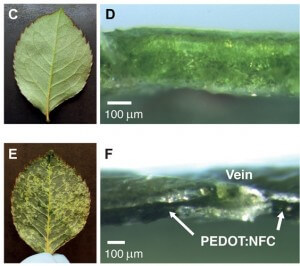Angle - a news agency for science and the environment

The world around us is full of messages, some visible and some hidden. Ordinary organic substances conduct and process ionic messages, meaning the movement of electrically charged atoms and molecules, like the messages that pass between living cells. Electronic materials know how to conduct and process electrical messages, for example what happens to electrons in an electrical circuit. There is also a third option - electronic organic materials, which conduct and process both electrical and ionic messages.
To date, scientists have been able to integrate ordinary electronic components into living things. For example, an electrode can be attached to the body to measure electrical activity, or an artificial pacemaker implanted to correct and control the heart's rhythm. Recently, scientists from Sweden presented a new study in which they said that they managed to build an organic electrical circuit inside a living being. The tissues serve as a template for the electrical circuit, and are an integral part of it. So if you've ever wondered what a flower feels like, new research is getting closer to finding an answer to that question.
Do it yourself
The researchers grew an ordinary rose in a vessel containing an electrically conductive liquid, consisting of water and ions. The liquid they used was a solution of PEDOT (poly-ethyl-enedioxy-thiophene). The basis of the solution is a polymer, a giant molecule made up of repeating subunits, which in this case was an electrically conductive organic polymer used in printing electrical circuits. PEDOT is currently used to create electrical circuits that consume little energy, among other things at the interface between electronic systems and living things such as detectors and electrodes.
The subunits of the polymer dissolved in water were sucked through the tubes in the stem of the flower and they reached the tissues. Inside the transmission pipes of the nutrients in the plant, different chemical conditions prevail than in the original solution, and as a result, the conductive polymer underwent self-assembly into thin threads that are more than 5 centimeters long.
Now the researchers connected gold detectors covered with PEDOT polymer to the wires inside the plant and thus succeeded in creating transistors which are electronic components built from a semi-conducting material and used as an electronic switch. Thus they created a simple electric circuit from the combination of the plant, the polymer and the detectors. The electronic performance of these transistors was similar to that of conventional printed circuits using the PEDOT polymer.
Futuristic upgrades

This innovative electrical circuit takes the combination of living things and electronics one step further beyond what we know today. What is interesting about these circuits is the fact that they do not need an external power source, and they can
To be built at least partially by self-assembly while utilizing the tissues of the living creature.
Such circuits can be used in the future for physiological monitoring of plants - this way we can know exactly what the condition of the plants is in real time, for example if they lack water, have enough nutrients or have been exposed to toxins. All this will be visible to us without the need to take samples for expensive laboratory tests.
It is possible that through this technology we can influence the behavior of plants, for example make them produce more fruit, or control the color of the flowers. Another possible development is energy harvesting through the conversion of solar energy into electrical energy through the plants, and it may even be possible to use this technology instead of genetic engineering or instead of hybridization of plants to change their properties.

2 תגובות
Last year I planted a mac mini - and it bloomed for me.
Terrible deal…
delusional research,
According to the pictures the only thing this research achieved was to kill the plant in an original way